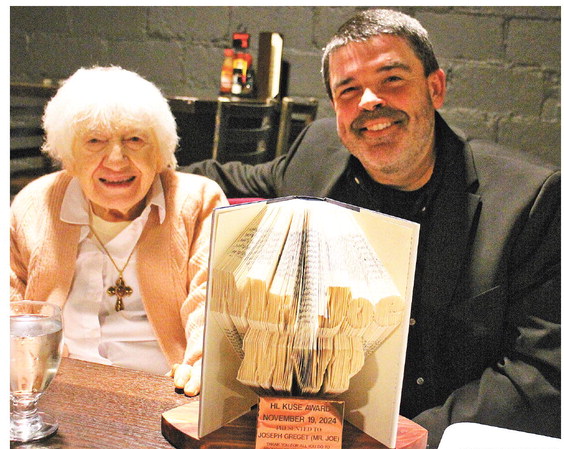Daycare providers face challenges during COVID-19 crisis
Governor Evers has released Emergency Order No.6, which restricts the size of child care settings, aimed to keep child care providers and centers safe from COVID-19.
The orders limit centers to only 10 employees and 50 children in the building at once.
Sand Box has been operating under the information that was sent to all child care centers, but no personal contact has been made.
“The Department of Children and Families (DCF), which oversees us, really has not communicated with us at all so we’ve been getting a lot of our information from the Department of Health Services and the Taylor County Health Department,” said Kelly Jensen, Director at Sand Box Child Care & Preschool, flat-out saying that she has been highly frustrated with the DCF’s reaction to COVID-19. “I think it’s a little bit interesting that our own regulatory department is not communicating with us,”.
Jensen vented her frustrations with DCF, saying the department’s initial response was inappropriate, and that the updated response is still inadequate.
“On Monday, the very first information we got from our regulatory department was pretty much ‘none of the rules have to be followed,’” she said, saying at first they were told to temporarily suspend requirements around the licensing capacity and reduced staffing, suspend rules regarding supervision of children, and rules around ratio size for ages 5 and over.
“Obviously they were thinking we were going to take in more school aged kids [now that schools have been closed],” she said. “Now, you think about it, we have these rules and regulations in place, they must be important, right? And now they [were] telling us to disregard all that. Well, if we’re looking at the safety of children and families here, I’m not going to step into that and just have a ton of kids here not in the right ratios.”
The DCF’s decisions were overruled by the Governor’s office.
Despite the expected increase of enrollment across all child care centers Sand Box has capacity to take in more kids, especially now that some people are actually taking their kids out of the program.
“We’re licensed for 100 and we weren’t running at full enrollment to begin with. When the schools closed some of the parents pulled out kids because they might have older kids at home that can now watch their younger siblings,” she said. “Some of the parents’ work places got shut down, so if they’re at home they can watch them... we’re at about 40 kids.”
Because of the 10 staff limit order, Sand Box was forced to undergo lay offs.
“I’m running at about 13 or 14 staff, so I had to lay a couple staff off to stay within that 10 staff limit,” Jensen said, assuring that the laid off employees will be brought back once the regulations are lifted.
“One helpful thing was when Gov. Evers loosened the unemployment [rules],” she said, referring to Evers’ Emergency Order No. 7, which ‘waives the requirement that unemployment claimants conduct at least four weekly work search actions during the COVID-19 emergency’ and allows those that were laid off because of the outbreak to enroll for unemployment sooner than they usually would.
“Being a small business, and I think with any small business, they are financially strapped so this was helpful to the employees I had to lay off,” she said. “We’re not sure how long the lay offs are going to be, but I had to get under that 10 limit.”
Gov. Evers and secretary of the Department of Health Services Andrea Palm told child care providers that they are “encouraged to prioritize access to their services for essential workers” such as doctors and first responders, to ensure their kids are looked after and the professionals can continue to go to work. The main goal is to keep as many essential services up and running as possible, especially hospitals, in order for the county to stay operational and help prevent the entire system from buckling.
But Jensen isn’t so sure if the government thought out their plan thoroughly before implementing it.
“This virus is so new and I think they were trying to make some good decisions, but I think some of them were knee-jerk reactions to it,” Jensen said. “Defining essential workers, sure doctors and nurses come to mind, but does the garbage pick-up guy come to mind? Does the food industry come to mind, the manufacturers? What are they going to look at if this isn’t a two or three week issue, what if it’s a four or five month issue?”
Jensen said that child care providers are divided on how the government has been handling the difference in regulations between schools and child care centers.
“Some people are kind of offended that Evers didn’t look at child care to shut down like the public schools,” she said, noting that she doesn’t hold that opinion personally. “I don’t know if it was an oversight or what... I think their thought was, ‘if you’re going to protect the school-age kids by shutting down and sending them home, you should protect the children in child care by shutting it down, too.’” Jensen views mandatory child care center closures as unnecessary, unlike the crowded and tight-packed public schools. Jensen and her employees had already been taking additional sanitation precautions due to the high number of influenza cases this year, so they were more well prepared for the virus outbreak than they would have been otherwise.
“We’re already [deep cleaning the building], we didn’t necessarily look at it as if we’re a breeding ground for germs and infectious illnesses. We looked at it as ‘we’re already doing this, so why wouldn’t we keep the kids here,’” she said, and that keeping the number of kids down helps the cleanliness of the building. “I do think that going down to 50 children was probably a good move. Obviously I didn’t have more kids so it wasn’t a big effect on me. I know some directors that are licensed for 300. How are they going to handle it?”
With the constantly shifting situation, information and regulations can abruptly change, but currently it seems larger child care centers may be able to go beyond the regulated capacity.
“What they are saying at this point, which I don’t know if I fully believe because things change so much, but they’re saying if the kids don’t intermingle you can count them as two separate groups,” Jensen said, explaining that multiple groups of 50 could be hosted under a single roof. “Which, if you think about social distancing, that does kind of make sense. If you have an upstairs area and a lower level area, and you could keep the kids from interacting... maybe if you had a big facility.”
Sand Box’s kids were already separated into groups based on age, and Jensen says they could potentially physically divide the children into two groups if there is a community need for it.
It is unknown how advisable it is to have so many people trekking around one building, but as a side note on a personal level, I highly discourage people from bringing their children to a huge childcare center that has 100s of kids, even if they are separated in to smaller groups. The virus is airborne and can live for days on surfaces, and even in the air. While children themselves may not get horribly sick from the coronavirus, they can act as a vector and spread it to their more elderly family members.
“I’m hoping one of the outcomes when we get on the other side of this, is the importance of child care in the community is more recognized than the initial kneejerk reaction for our department to say ‘oh, we’re just going to assume all the kids are coming here, please don’t follow any of the rules’ kind of stuff. Just, no, we’re a vital part of the community and it needs to be recognized,” Jensen said.
Jensen believes that shutting down child care centers would have a detrimental impact on communities, since parents would have to miss work to take care of their children or find someone else to do it for them.
“That’s going to be one of my big pushes, is to say we’ve already seen a little effect especially in the public schools, which is not daycare, however they go from eight in the morning to 3:30 at night. While school is going they do serve a large population that effects parents that have to work, so when the schools shut down you could see a little bit of ‘hey this changed up a lot.’ There’s a big population now that, maybe some don’t need child care, but elementary school probably did. What kind of different decisions did the parents have to make of that? Could you imagine if they had shut down child care with it?”
Other child care centers have shut down their buildings completely, while still doing what they can to help families.
Jennifer Shearer, CEO of Indianhead Community Action Agency (ICAA), an agency that operates multiple child care centers including Little Angels Daycare in Medford, said they are taking every precaution possible to keep safe.
“ICAA operates 10 head start centers over six counties and they are all closed based on guidance from Gov. Evers,” Shearer said. “We are having staff work remotely to provide continued follow up with clients and families, via phone, text, or any electronic means, to ensure they have the resources they need during this time.”
Despite the closures and electronic remoteness, Shearer say’s they haven’t given up on trying to keep the children engaged and learning. “Staff are providing video learning for the children and families of our centers,” she said, hoping to eliminate the need for any face-to-face meetings that may result in infection. Shearer said that child care centers are essential to keep communities in working order, and the limitations could lead to more strain on families.
“Many workers are either laid off because of business closures or because they did not have adequate child care to allow them to continue working,” She said. “This creates a very stressful financial situation on top of an already stressful situation regarding COVID-19.”
Shearer similarly expressed concern that prioritizing the care of ‘essential workers’ children, coupled with the new child care center capacity restrictions, could potentially put extra undue pressure on working families, as their kids may be unable to attend the care centers forcing parents to miss work in order to watch them.
She said more centers may be required to support the needs of communities, who are having a tough enough time as it is.
“With the recent restrictions on child care capacities and owners having to prioritize families based on occupation, we will see a rise in the need for child cares,” said Shearer. “There was already a severe shortage of child care centers in our rural areas, so this situation is especially hard on working families.”
“D efi ning essential workers, sure doctors and nurses come to mind, but does the garbage pick-up guy come to mind? Does the food industry come to mind, the manufacturers? What are they going to look at if this isn’t a two or three week issue, what if
—Kelly Jensen director of Sand Box Child Care and Preschool in Medford
“T here was already a severe shortage of child care centers in our rural areas, so this situation is especially hard on working families.”
—Jennifer Shearer, CEO of Indianhead Community Action Agency






